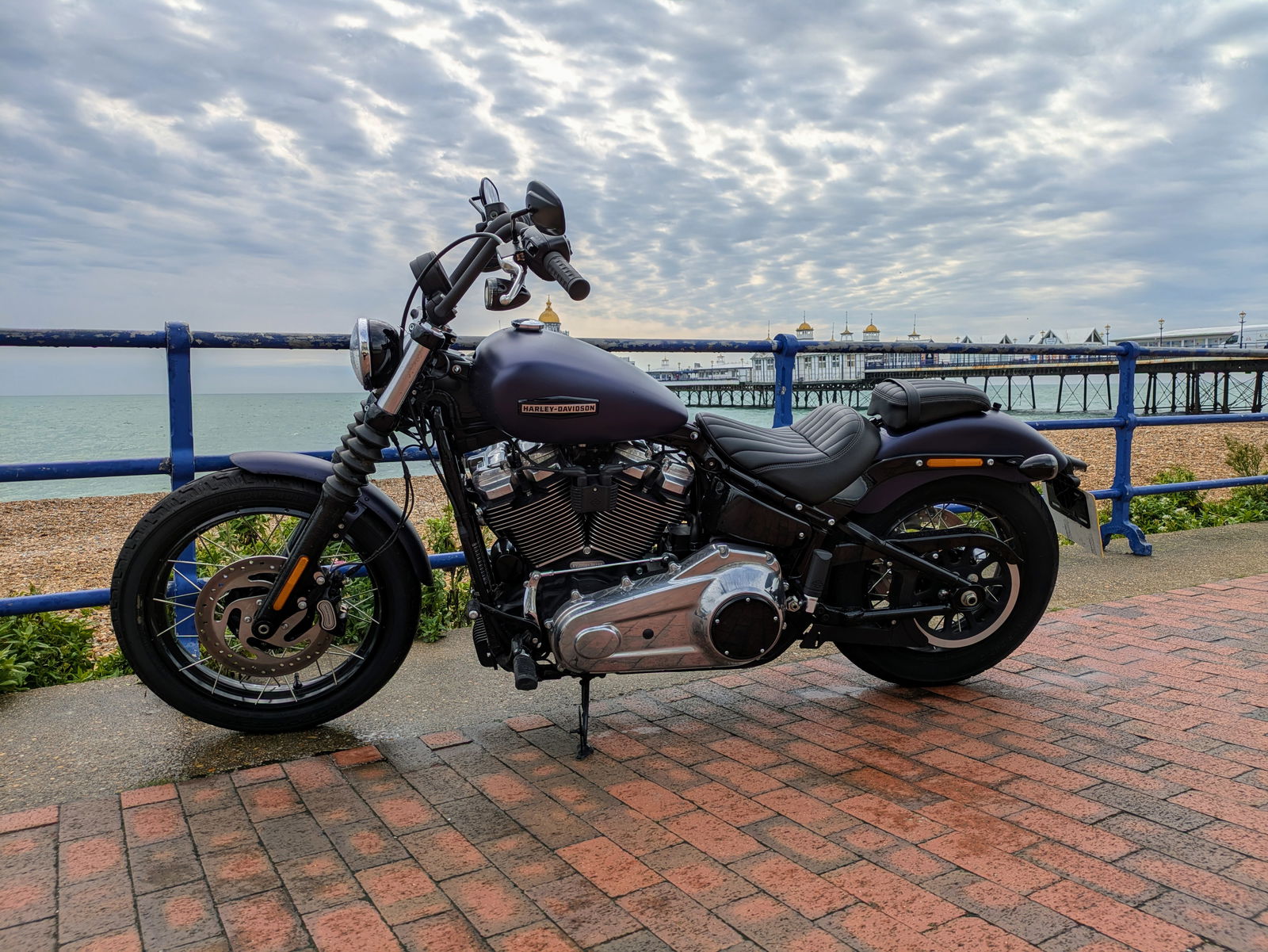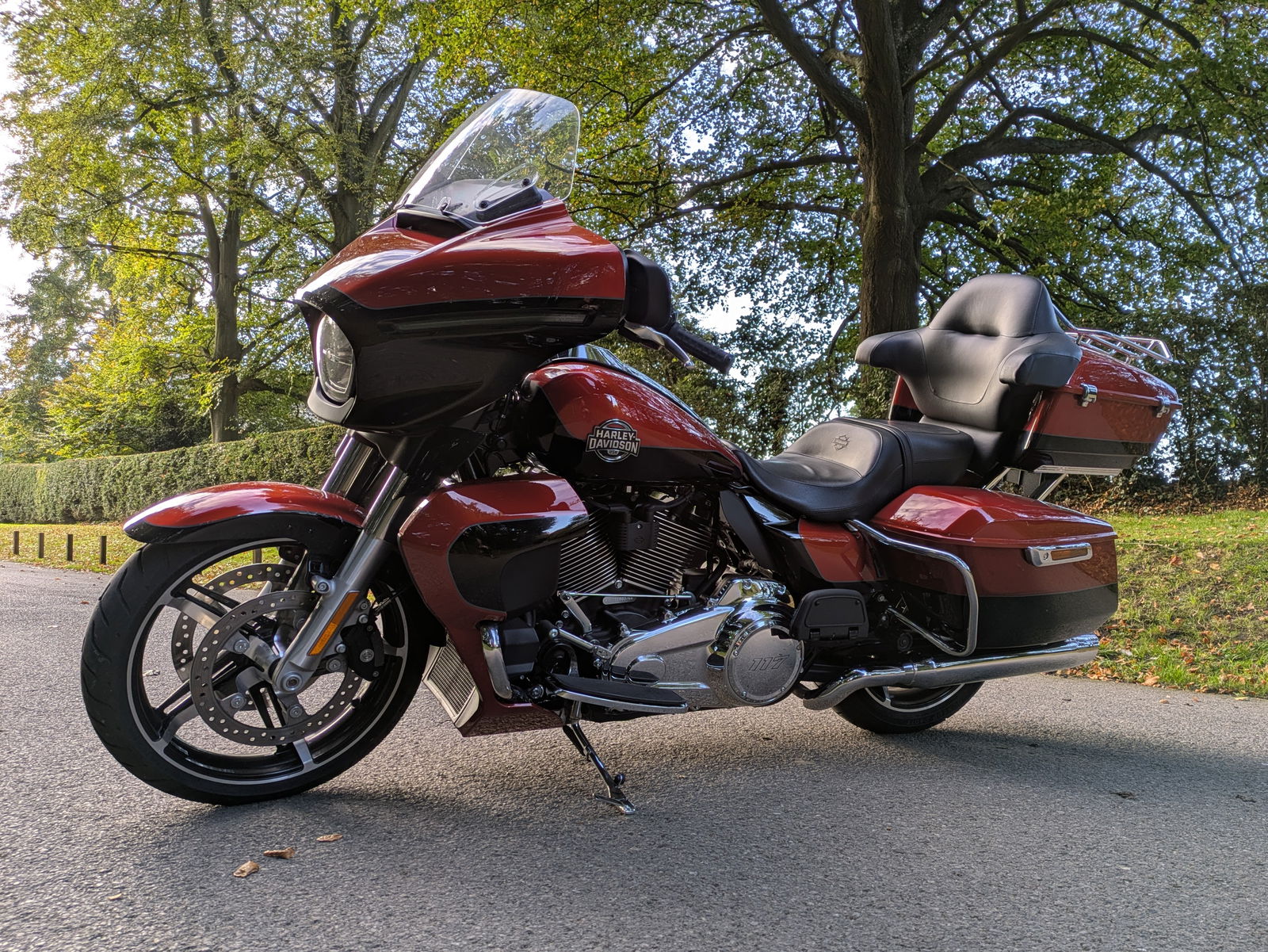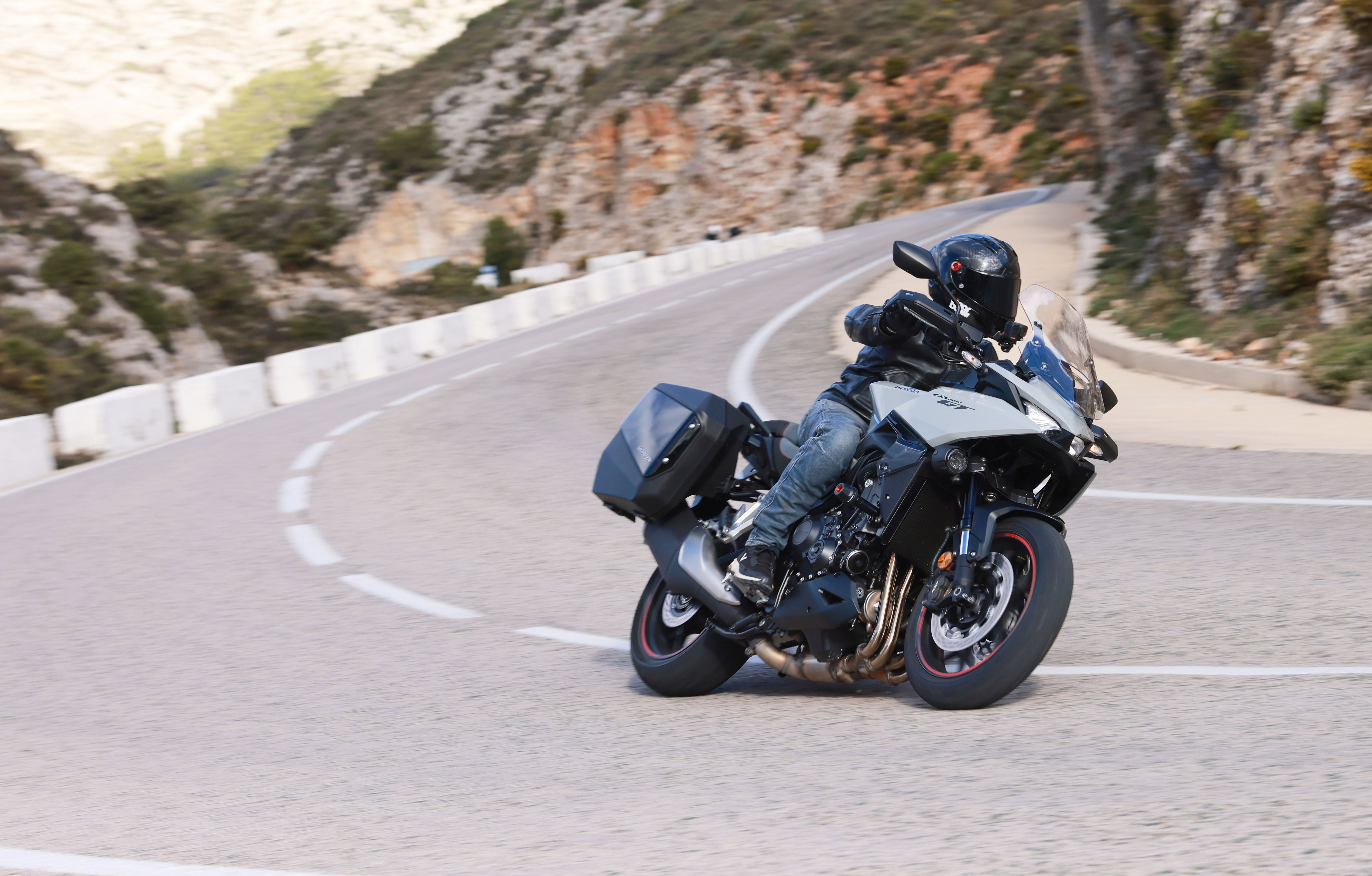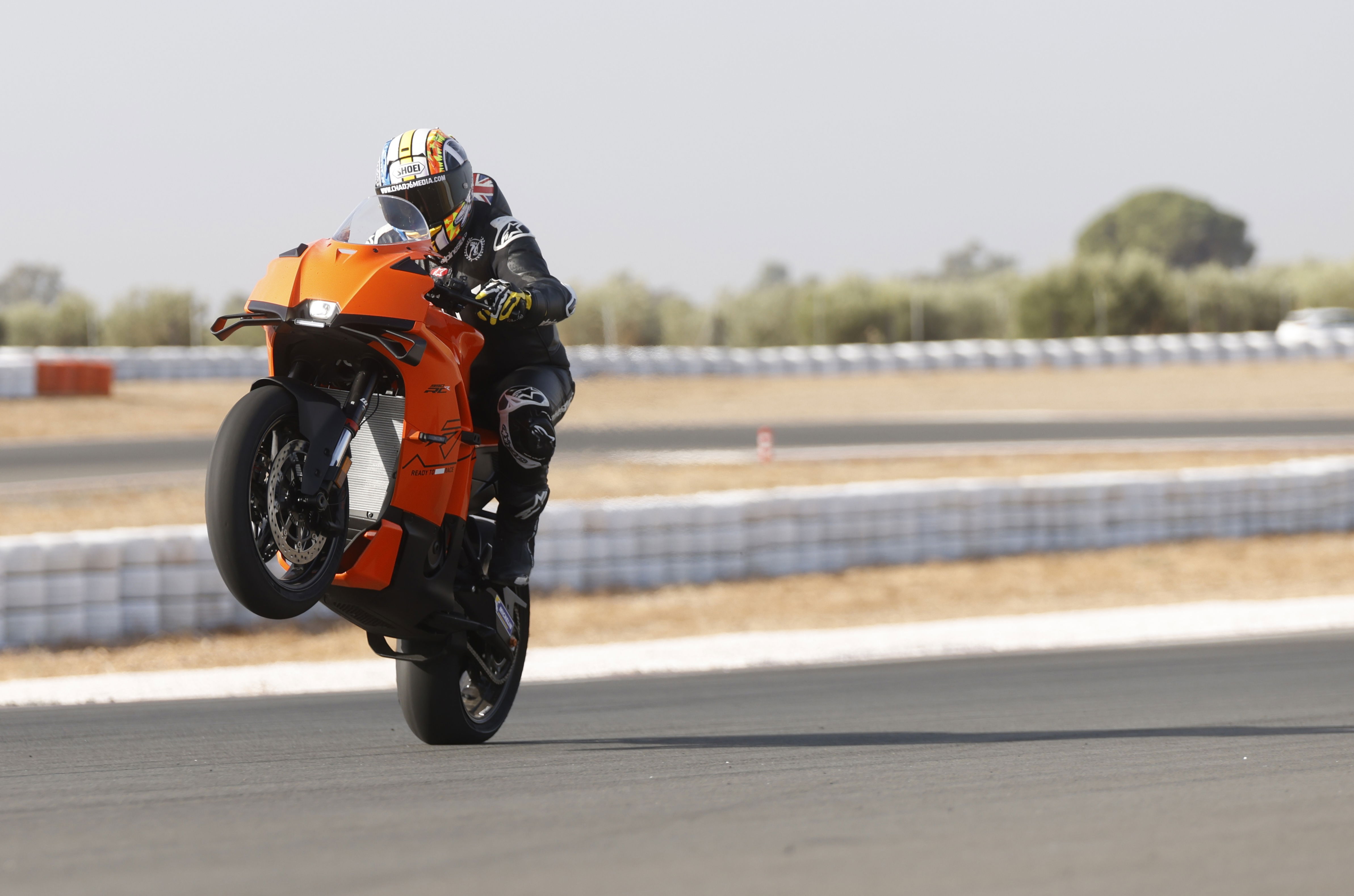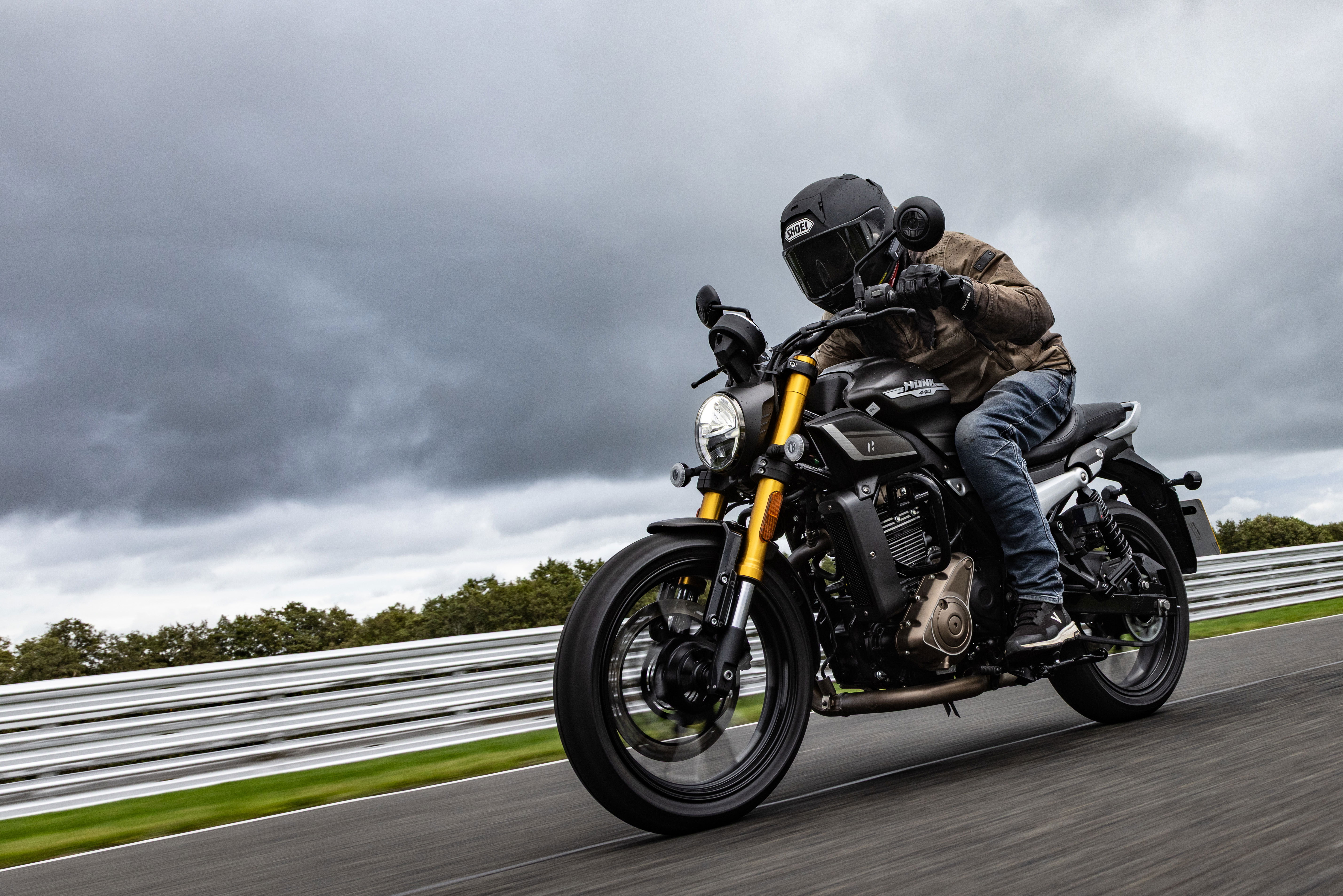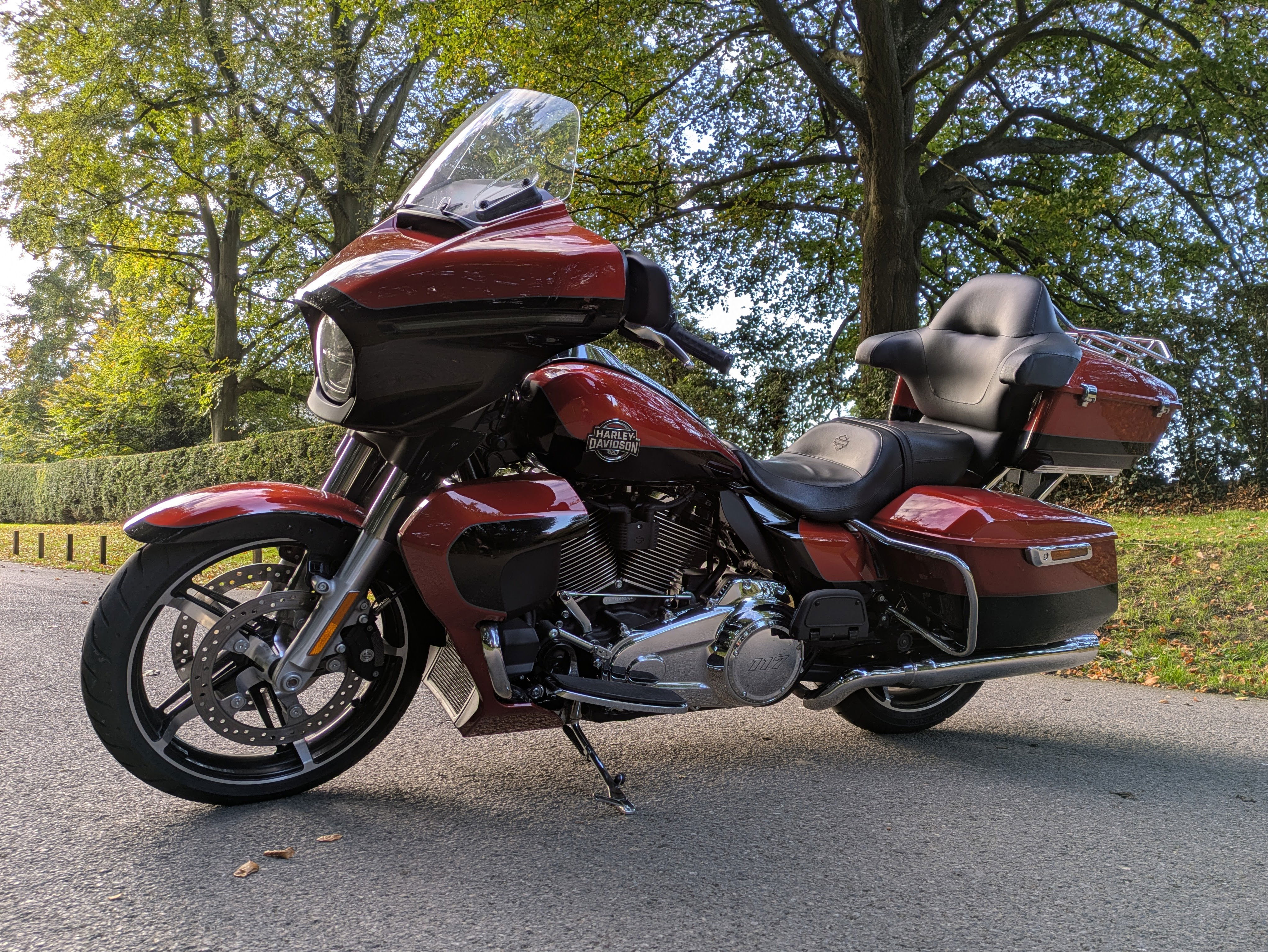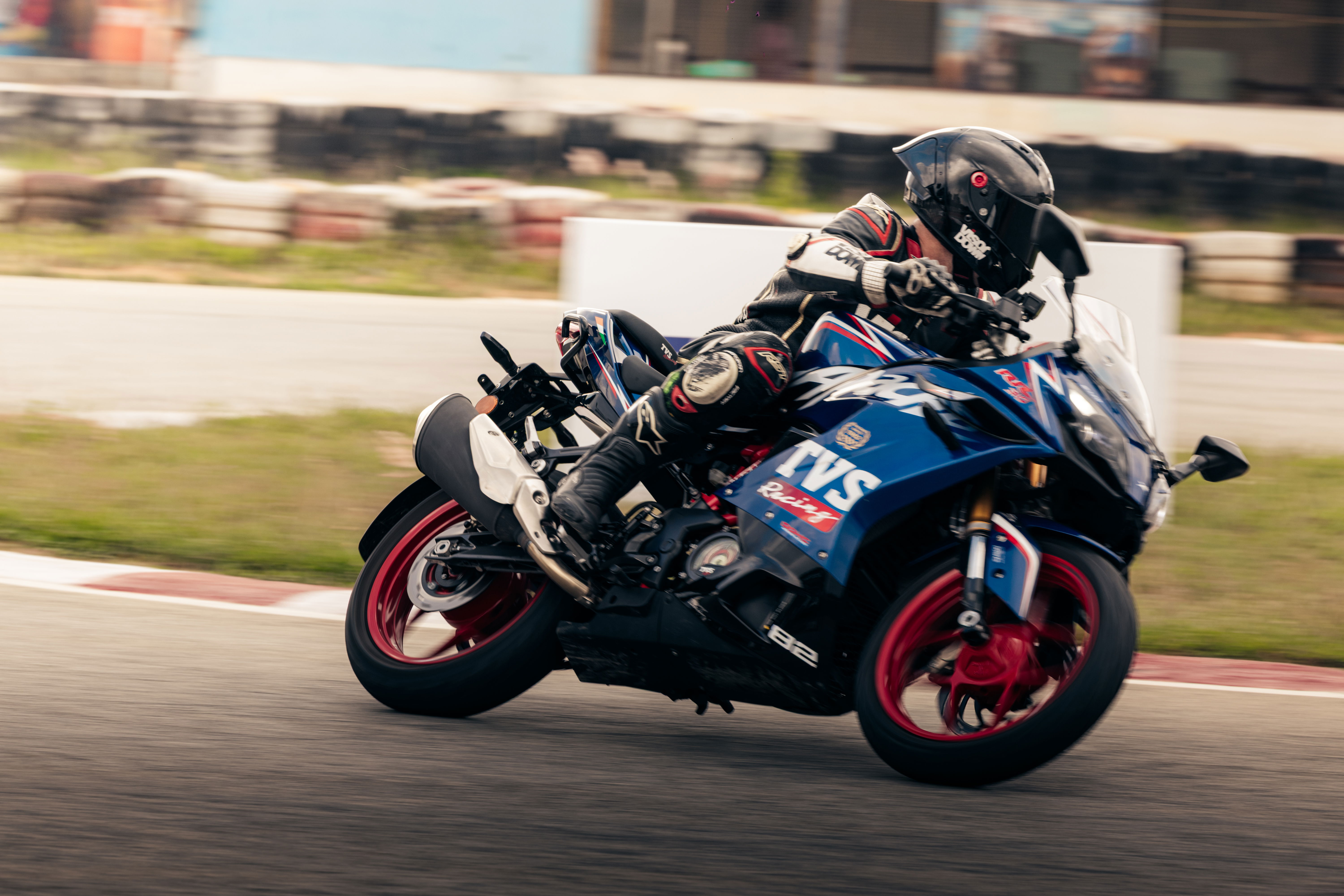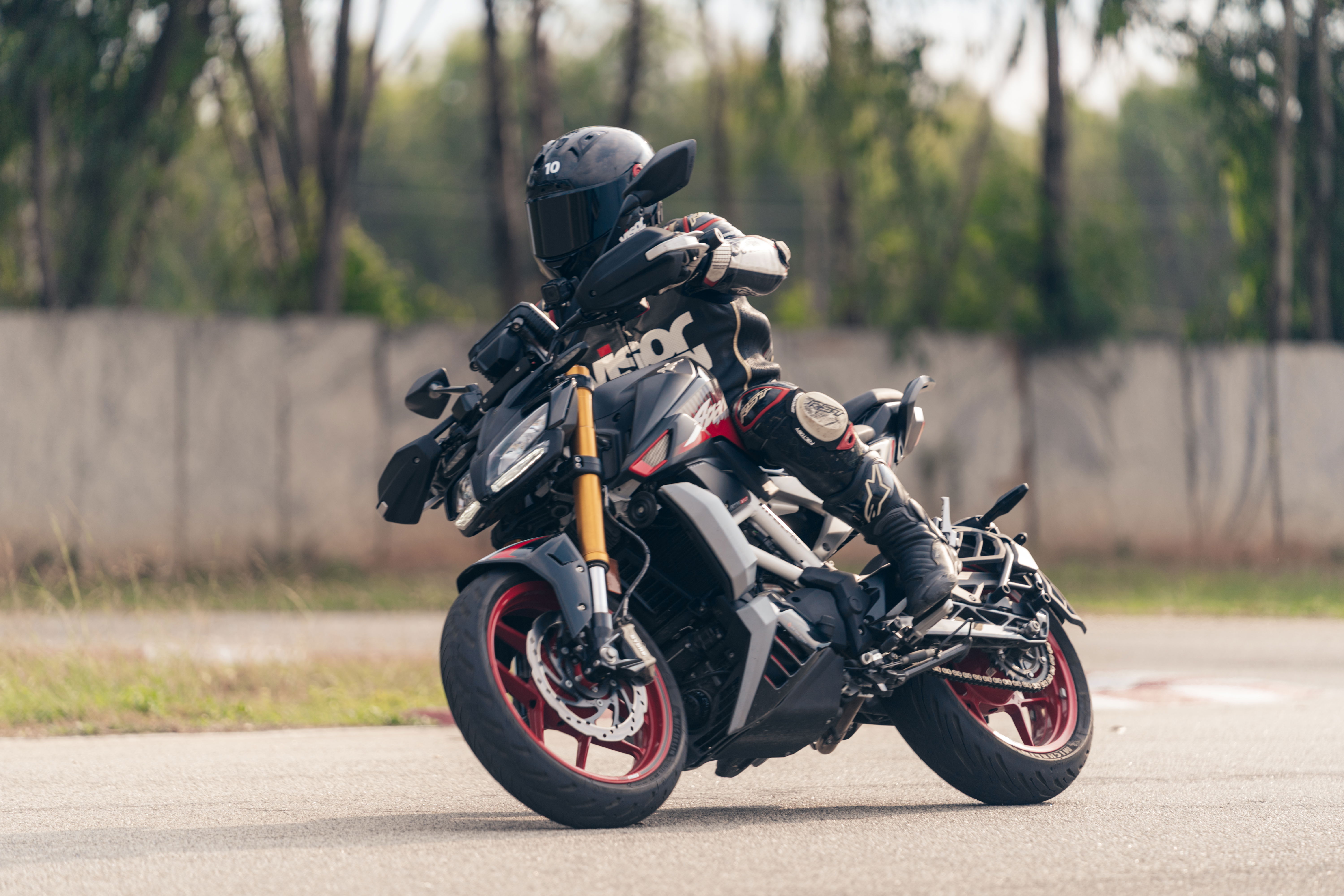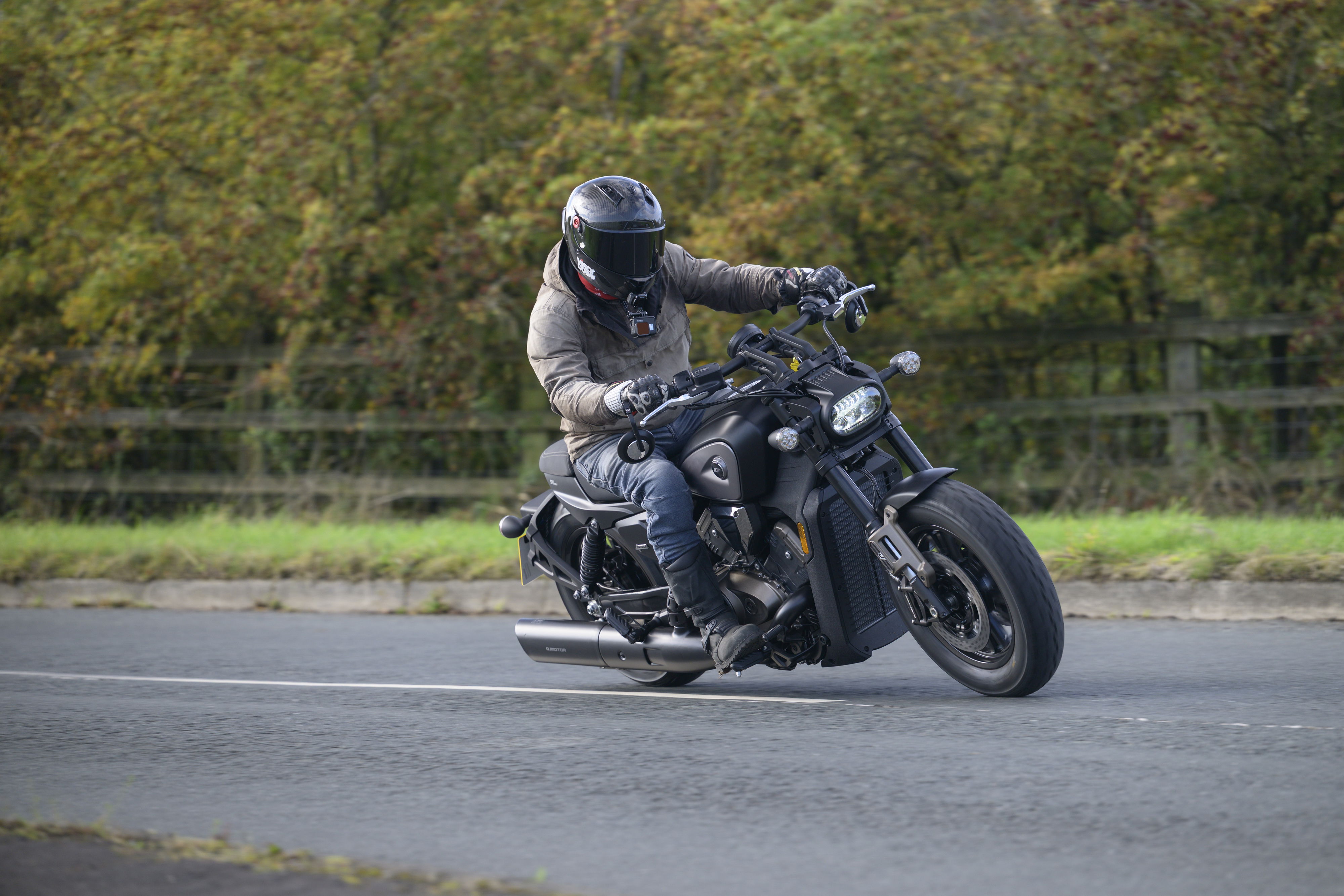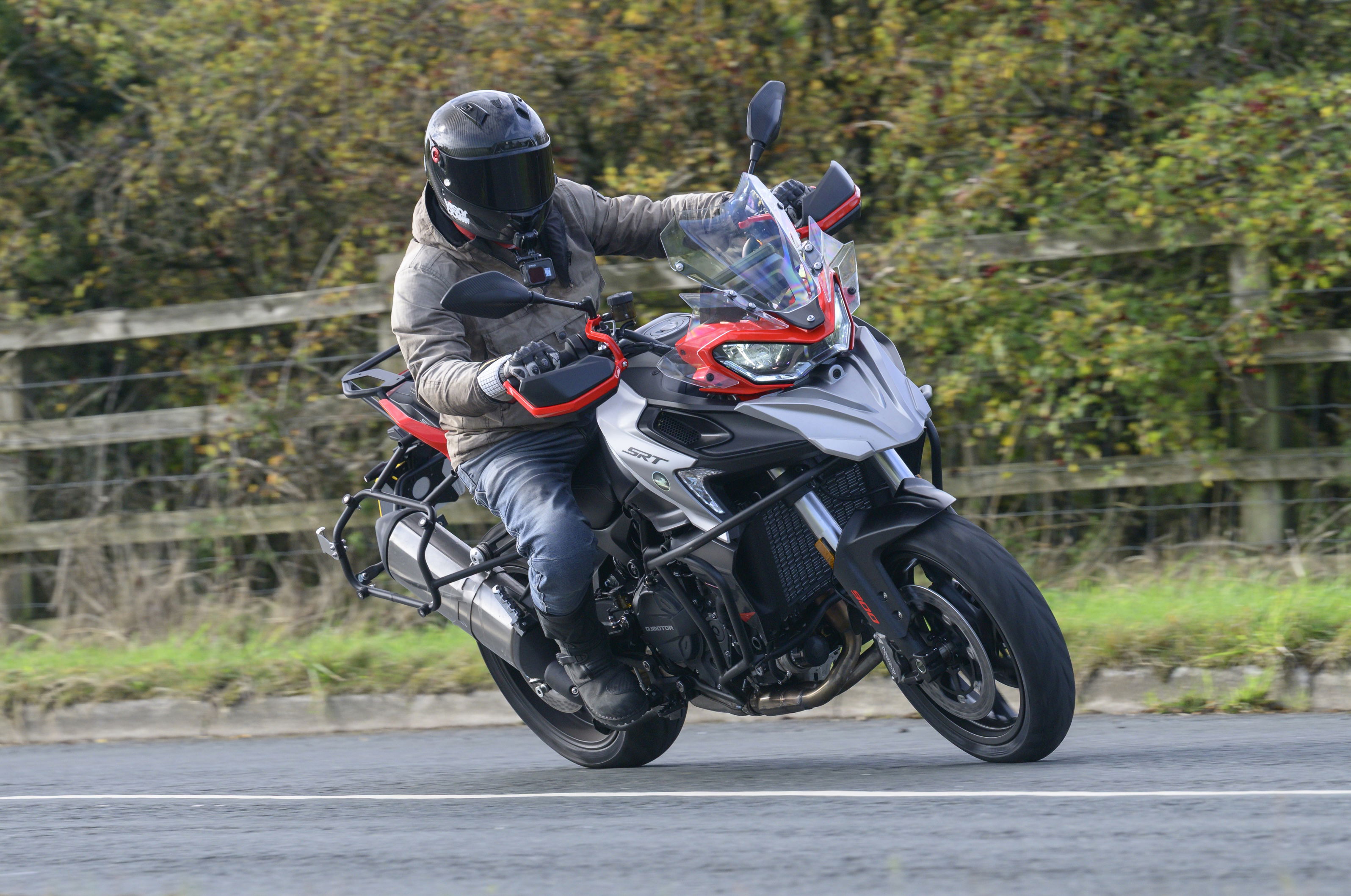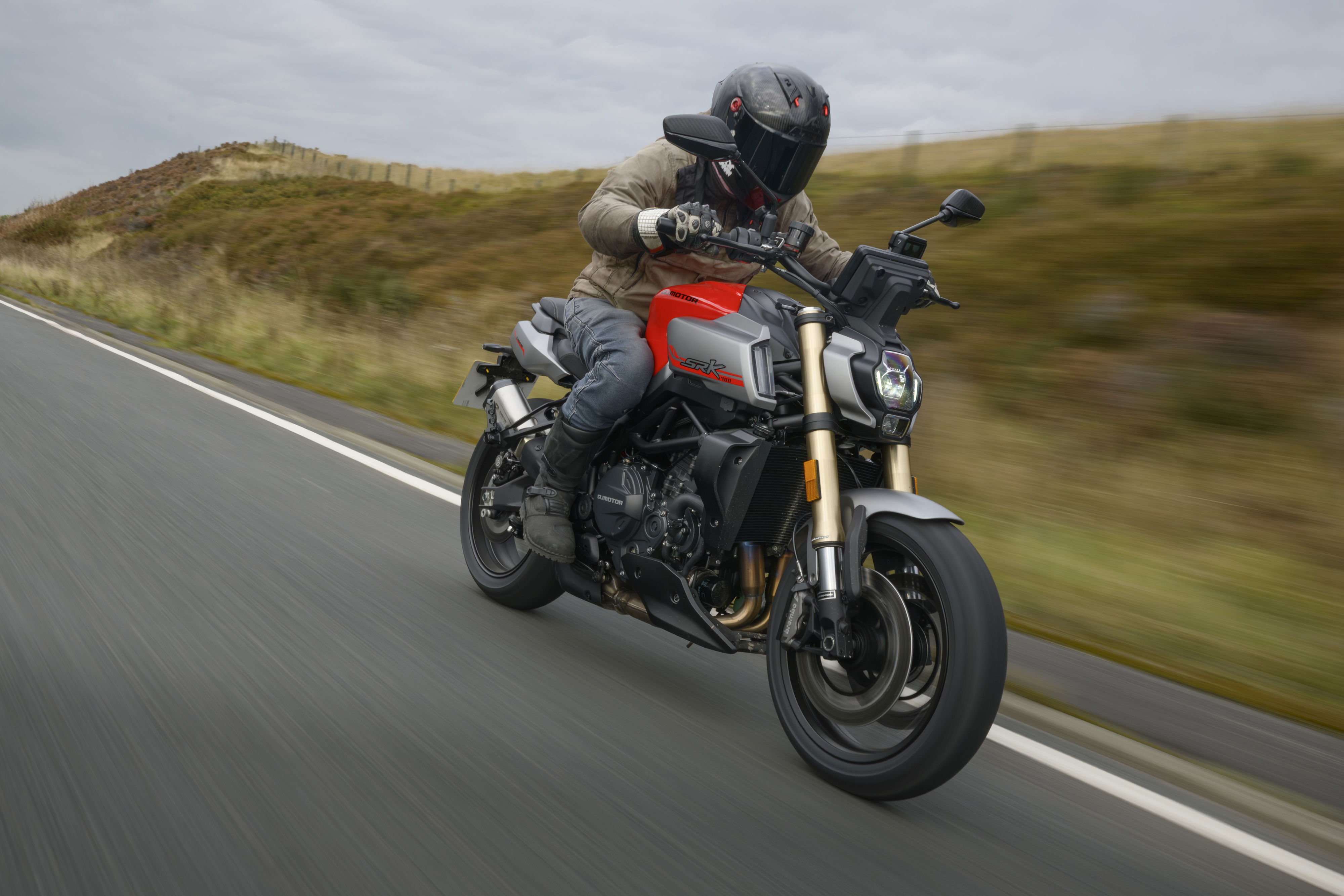2025 Harley-Davidson FXLRST Low Rider ST - Road test review
Harley-Davidson outdoes itself with this fire-breather wrapped in old-school cool.
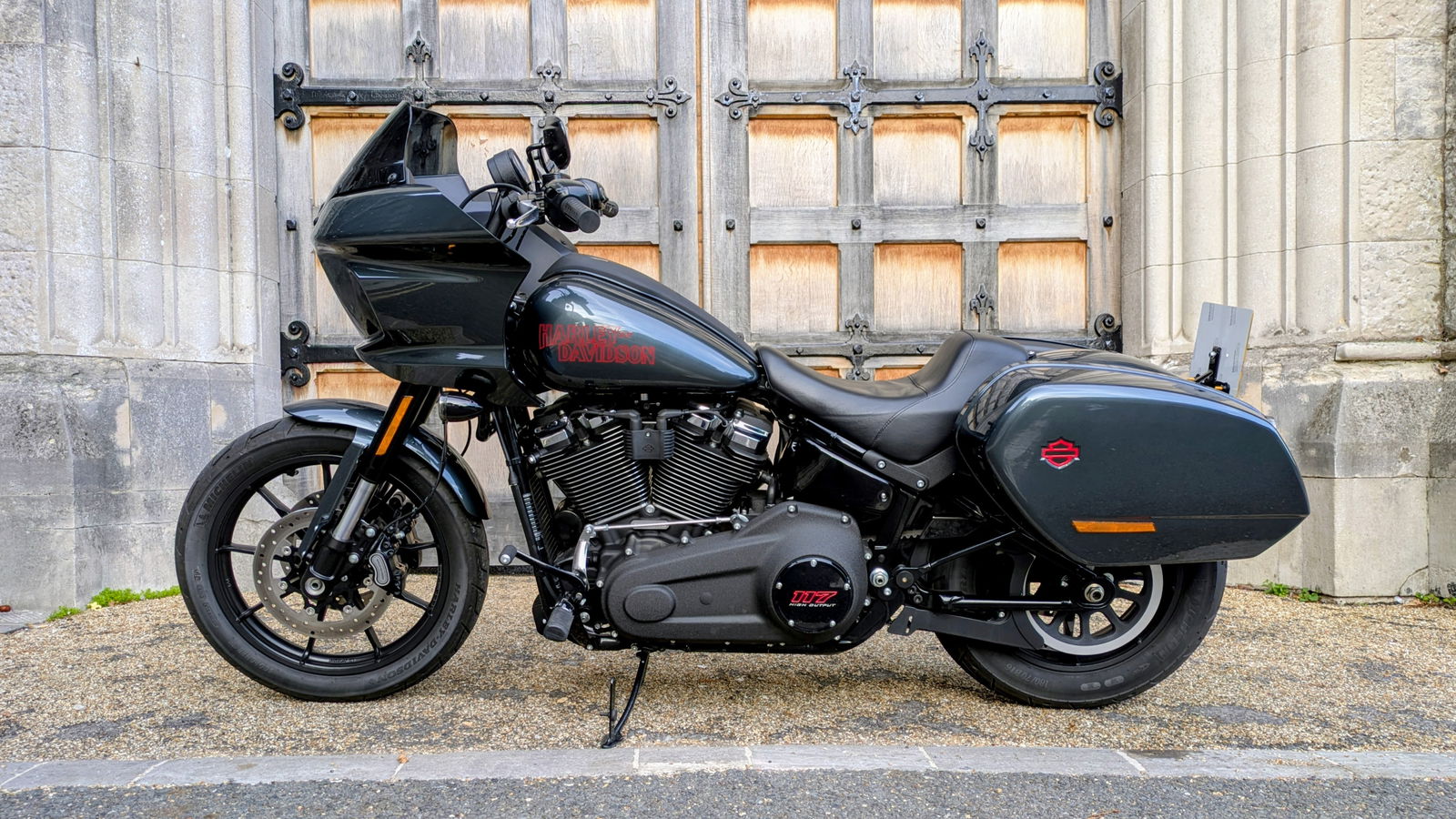
- Excellent handling
- Fantastic engine and sound
- It ain’t half expensive
- Really, it should be called the Low Rider GT
“Ahh, so this is what they mean when they use the ‘shot out of a cannon’ cliché,” I think to myself as the 2025 Harley-Davidson Low Rider ST I’m clinging to rockets forward with unforgiving force.
With the throttle pinned, the bike delivers the sort of roaring, cacophonous soundtrack that Americans seem to do so well. Speaking as an American, I’ll concede that the stuff we make isn’t always the fastest or best performing, but, man, it looks and sounds cool.
Hard acceleration on the Low Rider ST places you in the centre ring of a hurtling two-wheel circus of sound: the whine of intake, the clack of pistons, the deep and menacing roar of exhaust, rushing wind, and your own maniacal laughter.
As all this is happening, your butt presses into the (very comfortable) seat, your back and neck strain to keep from flopping backward. Forearms tense in clinging to the ‘bars. The Low Rider ST can rocket you from standing still to 60 mph in 4 seconds.
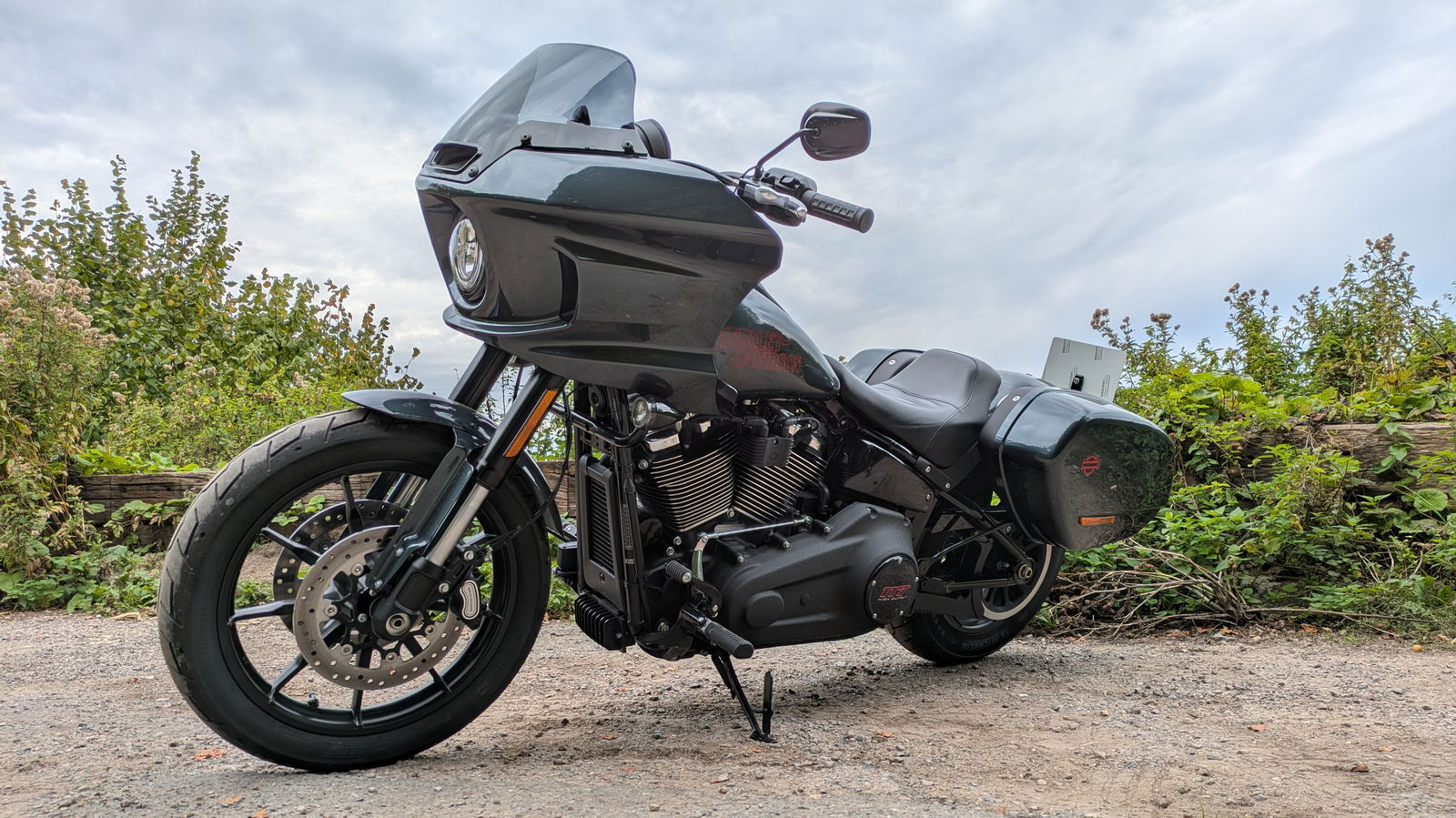
In terms of stop, go, and handling, it is easily the best of Harley-Davidson’s Softail line-up. It may very well be the best of all of Harley’s big twins. Whereas the Street Bob I rode recently is the perfect cruiser for people who already love cruisers, the Low Rider ST is a bike that could potentially convert someone from outside the cult of American V-twins.
It is, in my opinion, one of the very few motorcycles out there that is worth its (rather spicy) asking price. Here’s how and why:
Some background
Let me take you all the way back to 1983, when Harley-Davidson, having freed itself of AMF’s unenthusiastic ownership, was desperate to shake off the bad reputation it had earned in previous years. It needed something great - something to wow customers. Something that riders would drool over four decades later.
Leaning on the design prowess of Willie G. Davidson and the engineering talents of a young man named Erik Buell, the MoCo came up with the FXRT Sport Glide, a light-touring machine that handled markedly better than anything that had come before.
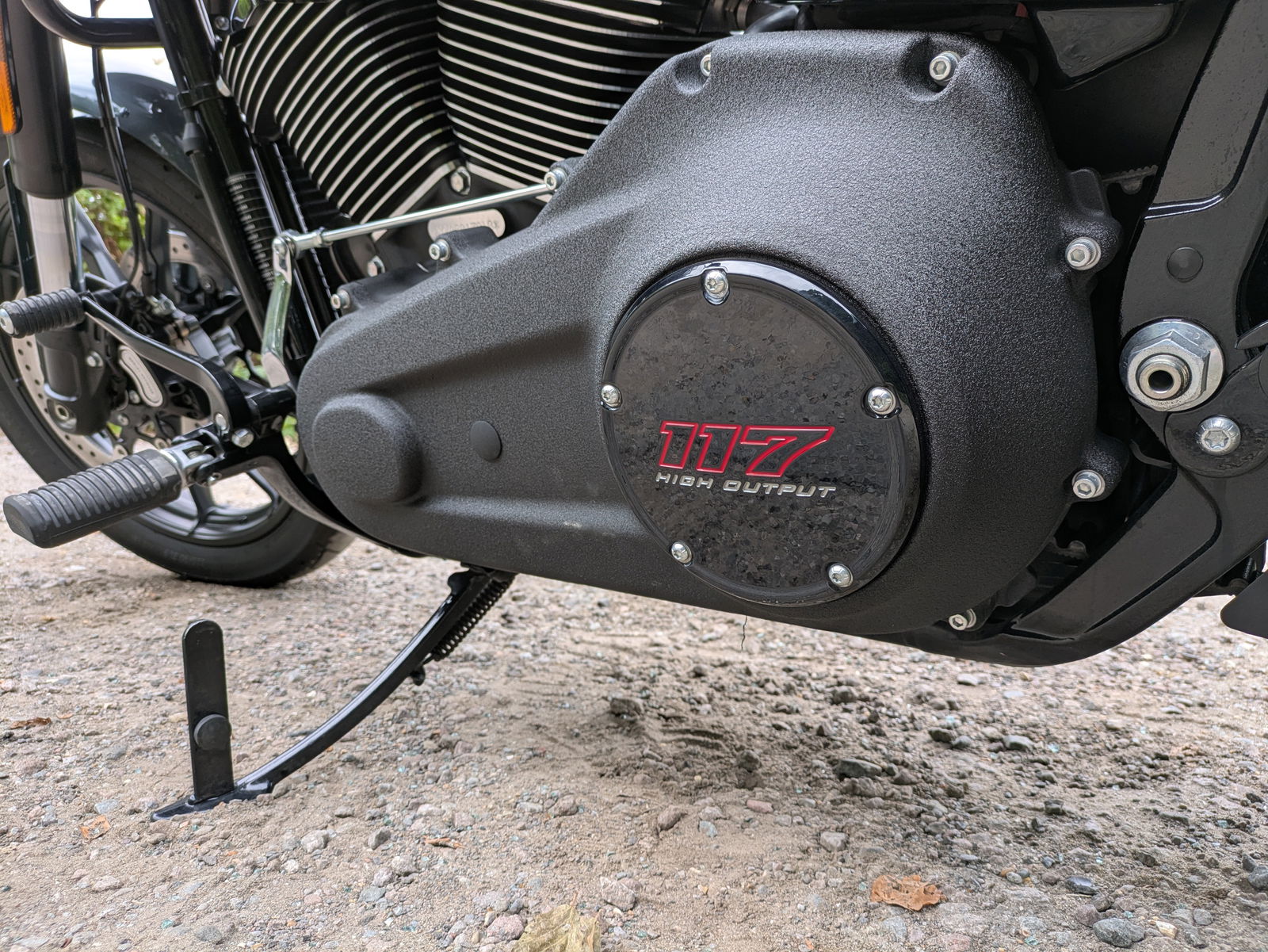
The bike’s standout feature was its unique fairing, borrowed from the (sadly) abandoned Nova project, which would have seen Harley-Davidson offering a V4 motorcycle.
Imagine. A V4 cruiser. Who would do that?
In Harley circles, they speak about the FXRT (and police-focused FXRP) with the sort of tone one might use when talking about your first kiss: excited, reverent, sensual, charged. The bike was produced for just nine years - 1983 to 1992 - but many Harley fans still list it among the best the company has ever produced. And plenty of aftermarket companies have made good money selling FXRT/FXRP-style fairing to mimic the look on modern bikes.
In 2024, Harley finally got the message and delivered the FXLRST, aka Low Rider ST. It was instantly well-received and acknowledged as iconic. If you’ve seen the TV series “Peacemaker” you will note that the Low Rider ST serves as the base for the Peace-Cycle.
In 2025, Harley made the bike even better, equipping it with the new 1923cc Milwaukee Eight 117 High Output V-twin, specifically tuned for hard acceleration, and equipped with the three new riding modes I spoke about in the 2025 Street Bob review.
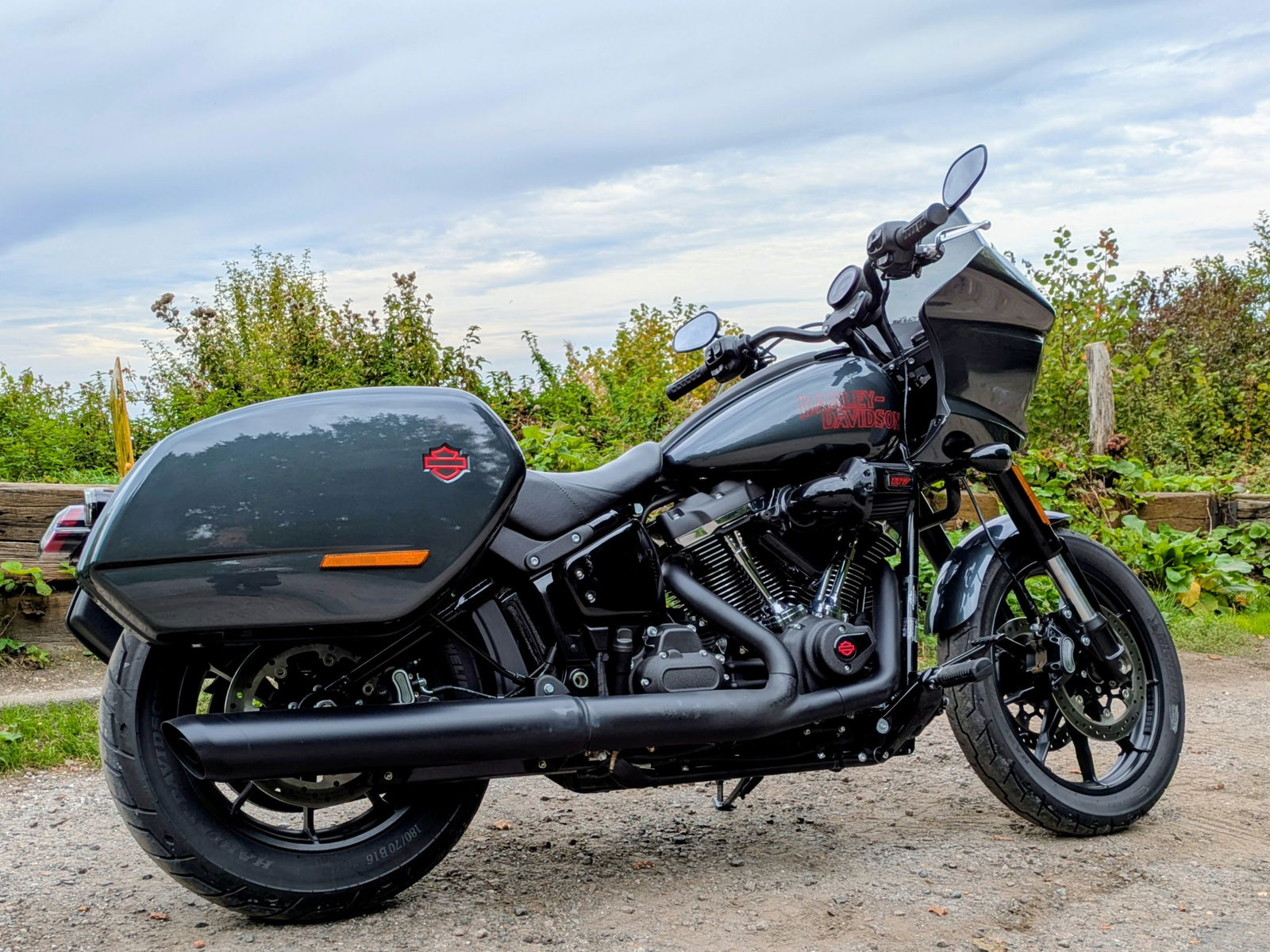
First impressions
Beauty is in the eye of the beholder but I find it hard to believe there’s anyone who would honestly describe the Low Rider ST as ugly. Over the top, maybe. “Not my thing,” sure. But ugly? No. You’re just trolling at that point.
The old-school fairing draws your attention right away. It gives the bike presence and notable sense of size over the rest of the Softail line-up, without having the ‘Can that actually fit in my garage?’ girth of Harley’s touring machines.
The fairing, mini T-bars, colossal air intake, and slim panniers give the bike a distinctly West Coast feel. It’s the sort of bike a person wearing a Dixxon Flannel shirt would ride (If you don’t know what I’m talking about, look them up; you’ll see what I mean).
Throw a leg over, and your backside will be met with a surprisingly comfy seat - on par with the all-day butt pads that Harley puts on its touring line. Seat height is an easy 715 mm (or 28 inches), so getting feet solidly down isn’t much of a challenge for a 6-foot-1 rider like me. You are straddling the bike’s Lincolnshire-sized engine, though, so those who are shorter of leg may still find themselves on the balls of their feet.
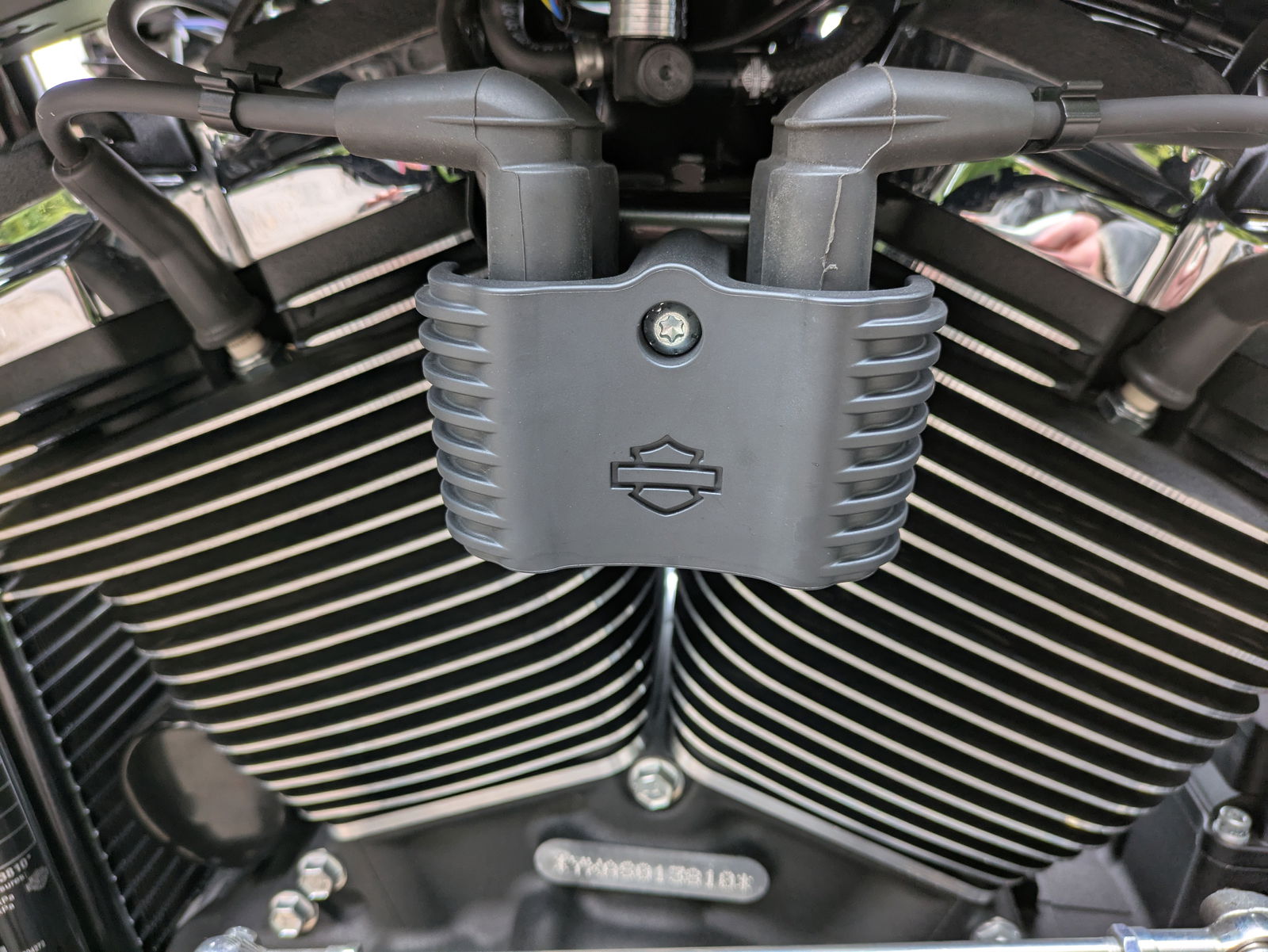
Out of the box, the Low Rider ST comes with mid-set controls. Unfortunately, the model I rode was equipped with accessory forward pegs. So, I’m not able to tell you whether your legs scrunch up as much as some reviewers claim.
I’d assume, though, that the seating position is similar to the Low Rider S, which I’ve also ridden. It is true that my knees were a little high but I don’t remember any discomfort.
In a review of that bike (for a different website), I wrote that “the ergonomics remind me a little bit of the Street Bob, but more comfortable. Not quite ‘angry monkey,’ more ‘perturbed primate.’ Raised bars and mid-set pegs make for a riding position that is aggressive, but not so much that you couldn’t stay that way a while.”
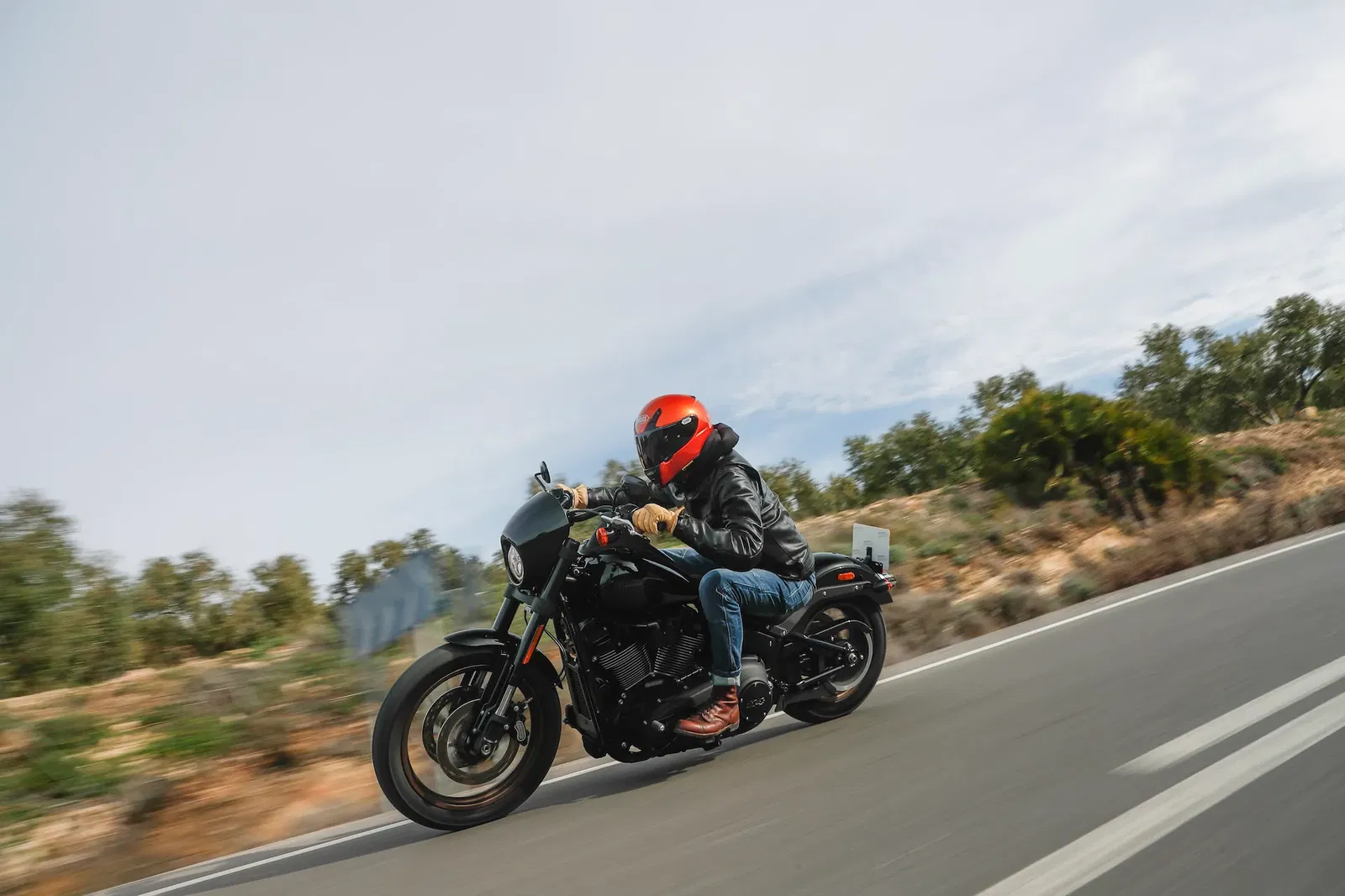
Back to the Low Rider ST: what I can tell you is that forward pegs on this bike are a terrible idea. In stretching your leg forward, your knee is placed next to the colossal air intake, which then forces your leg out and makes it extremely difficult to access and operate the rear brake pedal.
Considering the fact that the rear brake is traditionally quite important when corralling the low, rearward weight of a cruiser, the forward pegs create a situation that is markedly less than ideal.
Hands, meanwhile, fall comfortably to the T-bars. Again, the seating position is Street Bob-esque here, with your arms stretched more or less straight in front of you.
Despite fairing that could hide so much more stuff, the display in front of you is the same clock-like 4-inch set-up seen on the Street Bob and other Softails. The display is dominated by an analogue speedo. Below that is a digital readout that offers a wealth of information, including fuel gauge, and selected riding mode. You can click through for info on mileage, trip meters, time, tyre pressure, range, traction control setting, and cruise control.
On the left grip you’ll find the cruise control settings, a button that serves as the left turn indicator and horn - depending on exactly where you press it - and the up-down button/switch that operates the display. That latter aspect will annoy you when attempting to set the clock.
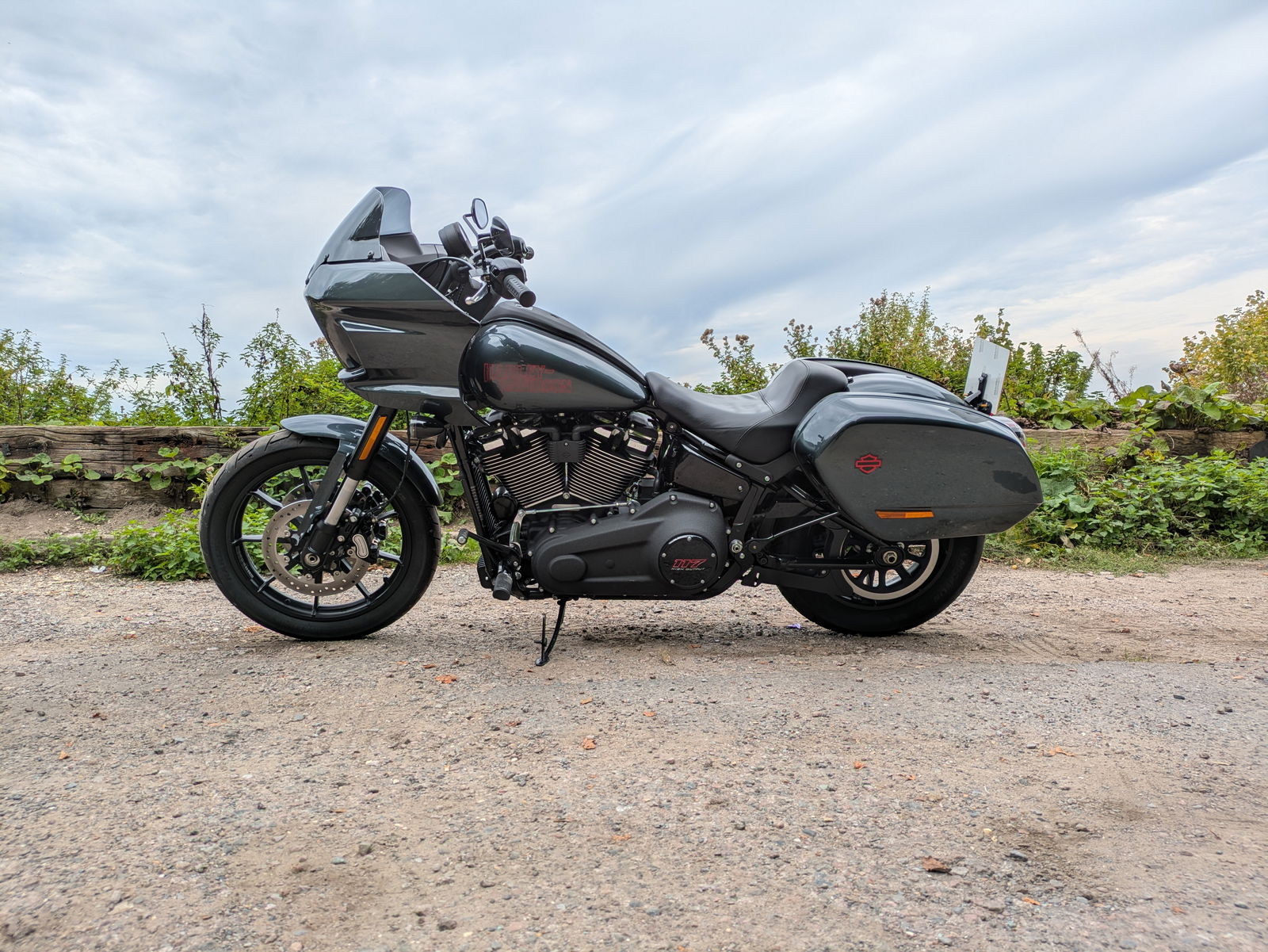
On the right grip you’ve got an up-down button/switch for the ignition, a similar button/switch that operates both the hazard lights and traction control settings, and a button that serves as the right turn indicator and modes button. Yes, Harley does that thing of putting an indicator button on each side of the handlebar. No, they’re never going to change this, as silly as most of us think it is.
Looking straight ahead, the fairing doesn’t occupy too much of your vision. The bike’s magic tinted screen stops below your eyeline.
Lifting the 304 kg Low Rider ST off the stand, you will notice the weight. Especially when attempting to duck walk about, or shove it around in a car park/garage. Fortunately, the weight is nice and low, so it never feels unmanageable; you just have to put your legs into it.
Engine and transmission
As mentioned, the Low Rider ST is driven by a 1923cc Milwaukee Eight 117 High Output V-twin engine that claims peak outputs of 112 bhp at 5020 rpm and 127.5 lb-ft of torque at 4000 rpm.
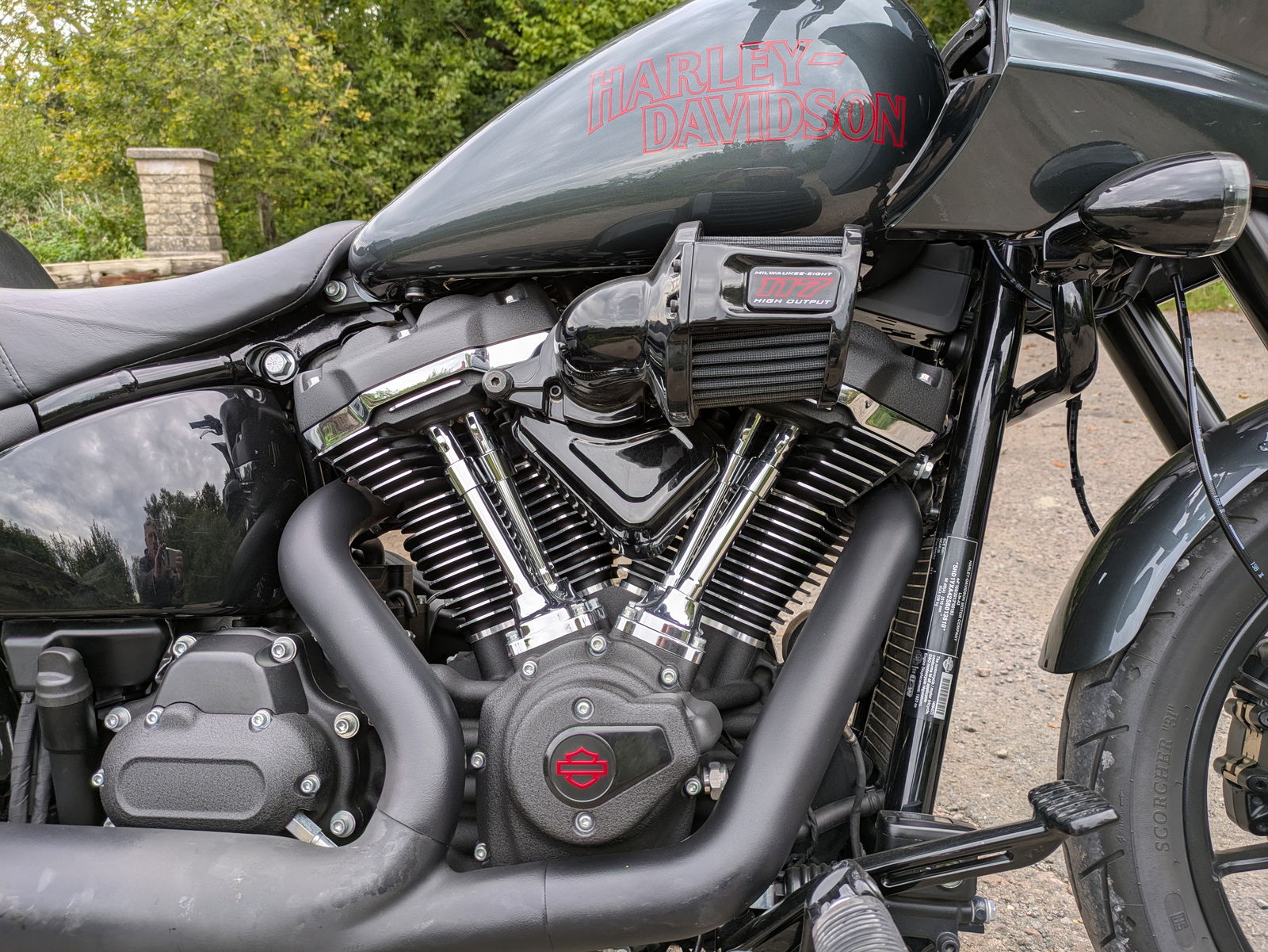
One of the big changes that Harley made to the Softail line for 2025 was to begin offering three different engine tunings, to enhance and distinguish the character of a given model. Those three tunings being: Classic, Custom, and High Output.
The Classic engine promises “smooth street performance with a flat torque curve” and has the lowest peak outputs of the three, exchanging numbers for usability. It’s the engine used by the Street Bob.
The Custom engine offers a little more oomph and is “engineered for intense acceleration and effortless highway cruising,” according to Harley-Davidson. It’s the tune used on the 2025 Harley-Davidson Fat Boy.
And this engine, the High Output, according to the MoCo is “ideal for riders who crave high performance in the upper rev range.”
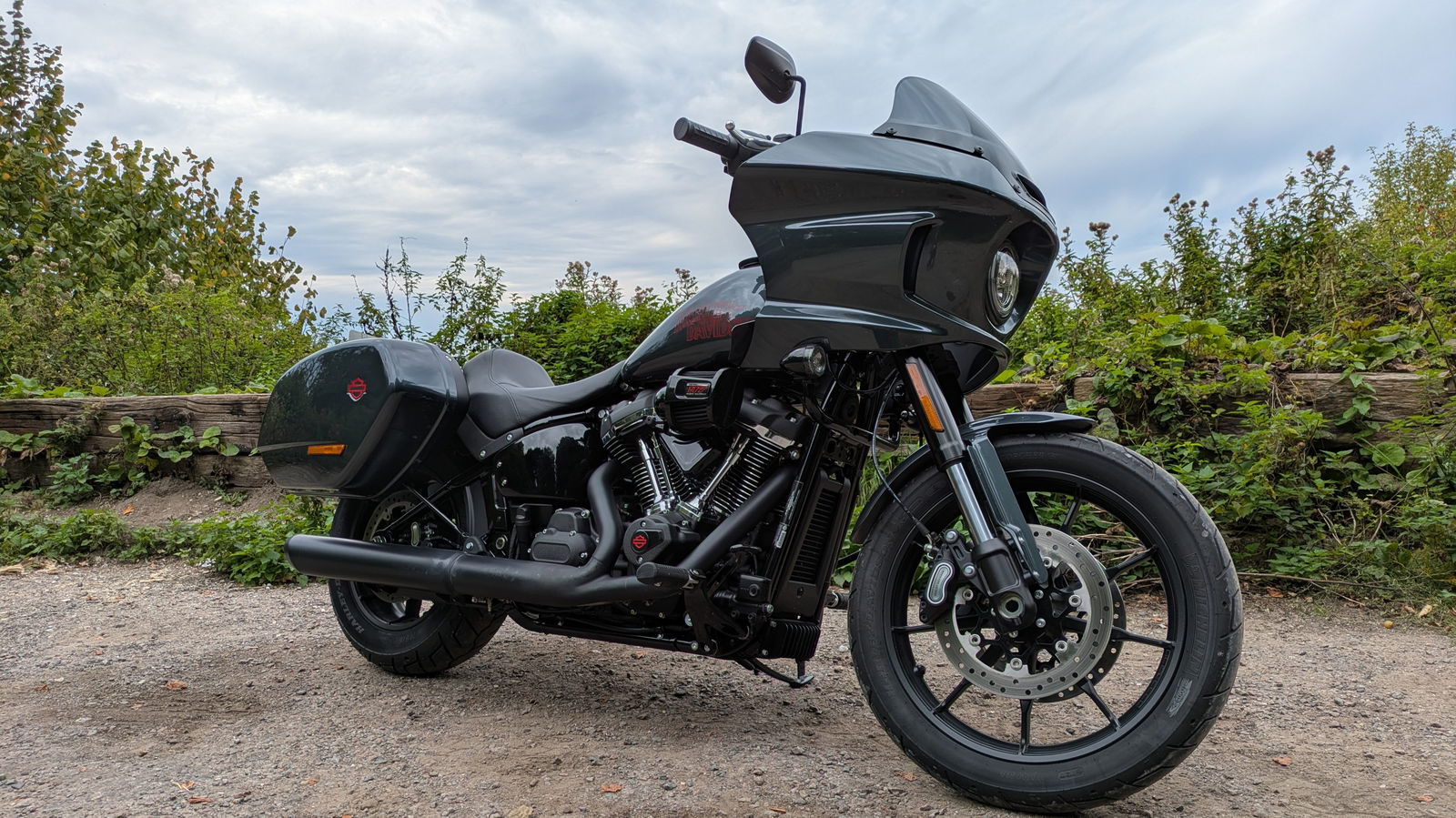
These different tunes are paired with three new riding modes: Sport, Road, and Rain. You can probably guess the difference between each. For my money, the aggressive throttle response of Sport mode fits the Low Rider ST’s mood perfectly.
The Milwaukee Eight is an amazing engine, with walls of power and torque like a tidal wave: fluid but undeniable. And the soundtrack it delivers is incredible.
The High Output tuning of the Low Rider ST allows you to rev a little harder than one might on other cruisers. You can make it growl that much longer. And as a result, you will be seeking out roads with lots of roundabouts just so you can tear out of them.
The engine’s solid for the long-haul, too. The days of a Harley struggling to cruise at enthusiastic motorway speeds are a distant memory. The Low Rider ST’s powerplant is very happy to sit all day at 80-85 mph without fuss or excess vibration.
The six-speed transmission is about as good as you’re ever going to get from a big twin. Gears are achieved with a life-affirming thunk, but it’s no less agricultural than an old Kawasaki Versys 1000 transmission. As has always been the case, clutch pull requires a strong left hand.
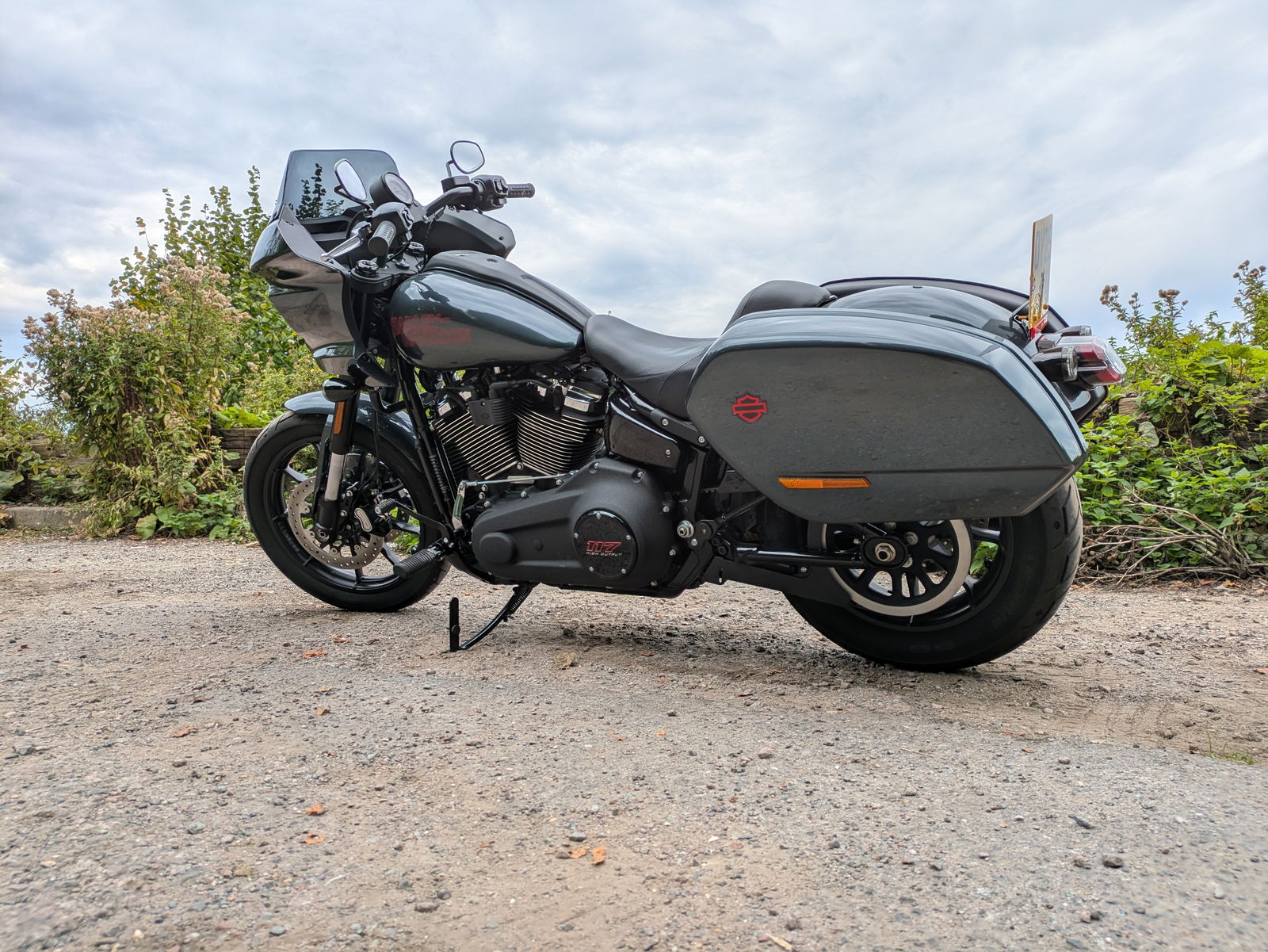
What it's like to ride
Pushing the Harley around a car park will have you saving money on a gym membership. But the Low Rider ST’s weight all but disappears on the go.
I’ve ridden most of the Softail line-up and the Low Rider ST is easily the best handling. Yes, it maintains a sense of avoirdupois presence - especially in corners - but I reckon it’s about as close to “flickable” as a big Harley can be.
Overall, the suspension does a good job of staying calm on sharp bends and absorbing most of the imperfections of British roadways. The bike is notably more bump-tolerant than the Street Bob, for example.
Things do get a little unsettled, though if you go too hard on the front brake. As with all of the Softail line, the front is inclined to dive. It's a feature, I guess - not a bug. And the dual front discs mean you at least get a good amount of whoa from the front, which is handy if the air intake is blocking your access to the rear brake pedal. (But, again, the forward pegs that created this problem are not on the standard model)
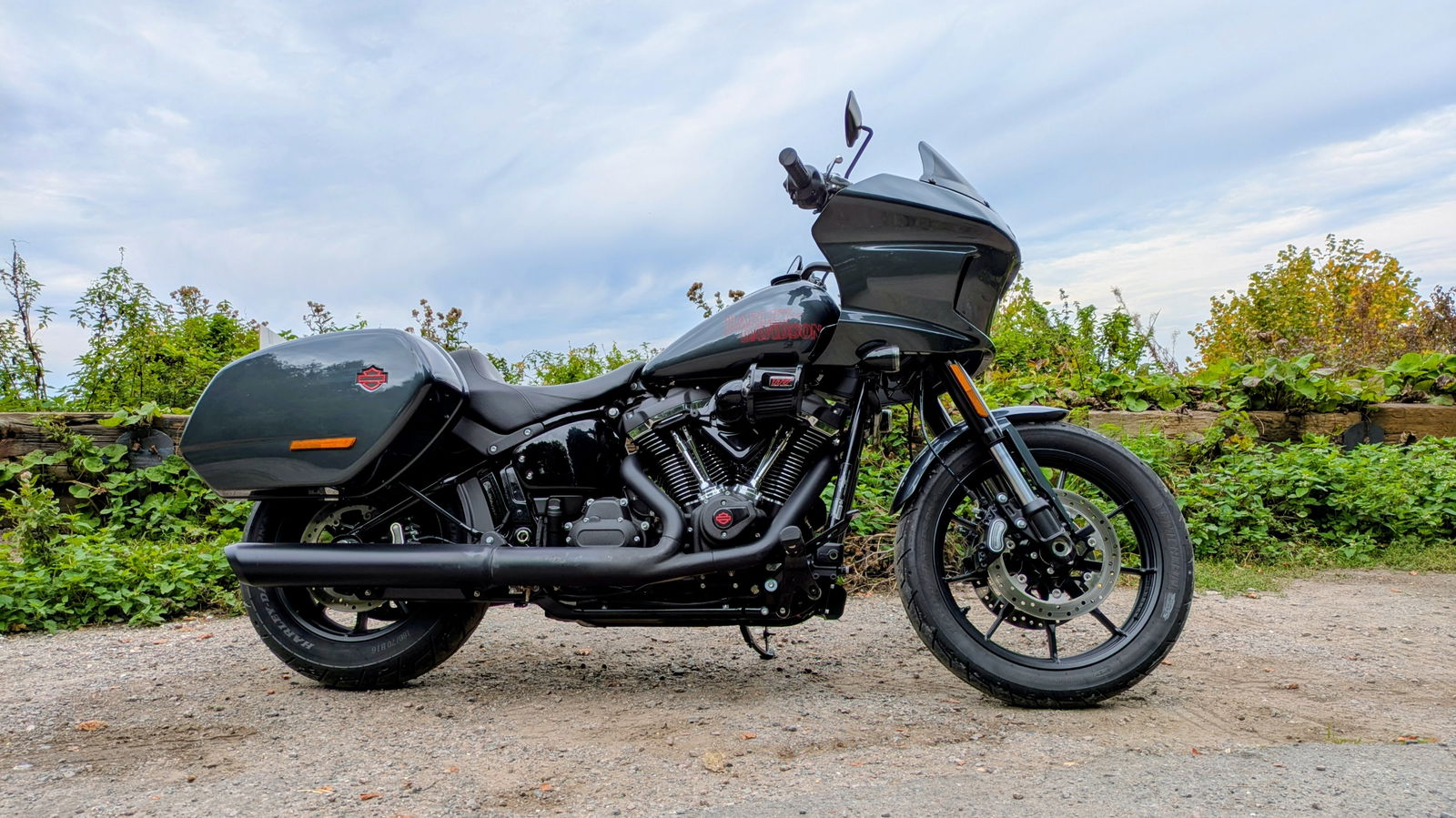
You get 31.3 degrees of lean angle on each side, which is decent for a cruiser. Stick to license-keeping speeds and you’re unlikely to ever touch a peg down.
Truth be told, I can’t imagine the Low Rider ST would be anyone’s first or second choice for going nuts in the twisties. That’s not a criticism; no bike has to be all things. But I do think it’s silly that the MoCo has chosen to give the bike its “ST” designation. Why overpromise like that? “Low Rider GT” has just as good a ring to it and would be more honest.
There’s definitely more of a ‘grand touring’ spirit here than ‘sport touring.’ The relative lightness of the bike compared to Harley’s touring models makes it more manageable, while the fairing does an excellent job of keeping the weather off.
The Low Rider ST’s screen is one of the best I’ve ever encountered. You look over it rather than through it, yet it somehow puts your helmet in an undisturbed cushion of air.
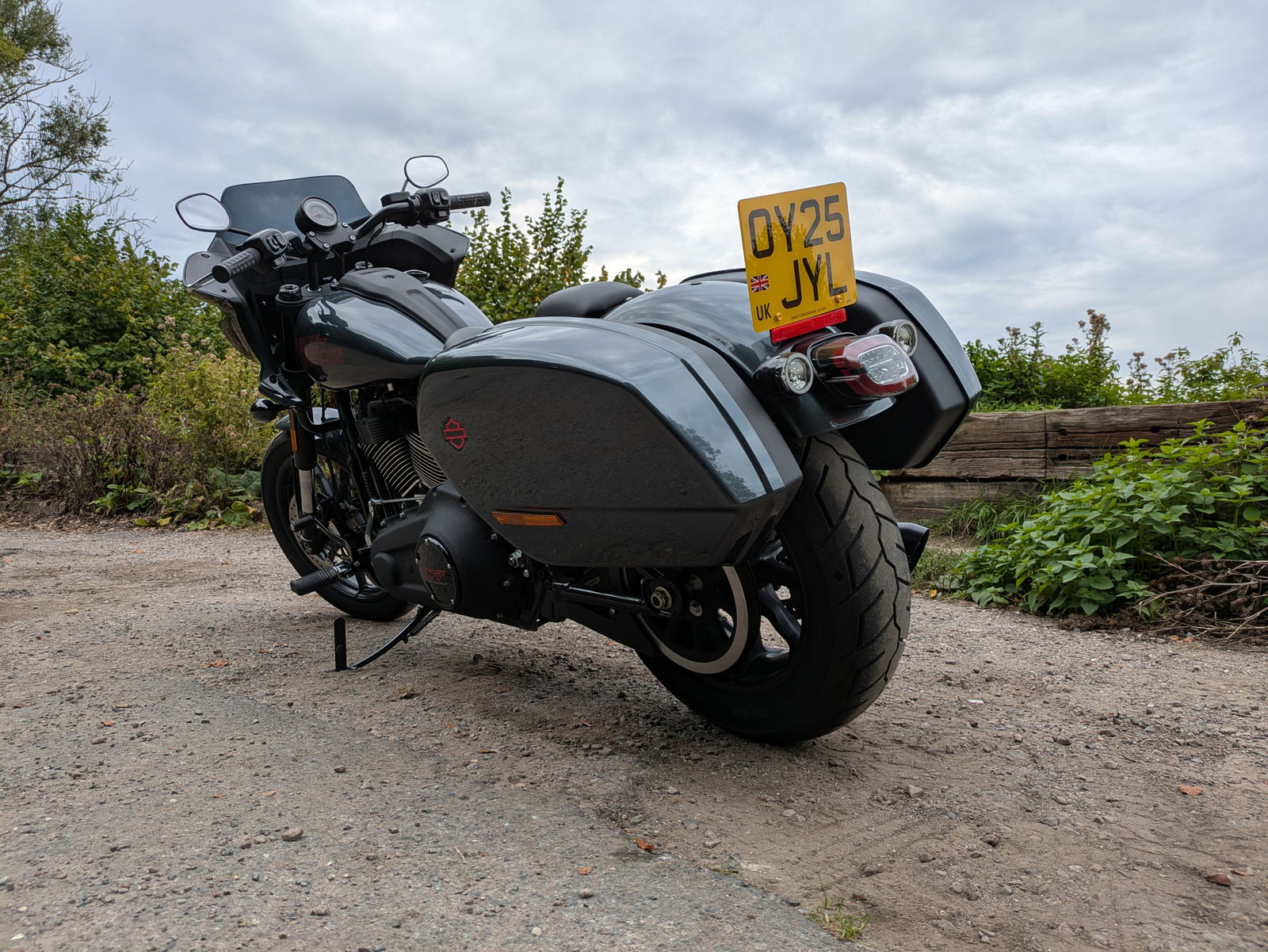
Add an all-day comfy seat, a respectable 18.9-litre tank, and a spot-on cruise control set-up, and the Low Rider ST is an excellent choice for cross-country jaunts. Perhaps the only thing going against it in this arena is the size of its panniers. Officially, they have a combined capacity of 50 liters but the shape and internal clunkiness means you’ll be lucky to get 20 litres a side.
And, hey, 40 litres is plenty for a two- or three-day solo trip, but if you’re going to be out for longer you’re going to want to invest in some additional luggage. As an aside, I know from experience that Kriega bags strap easily to Harley Softail pannier mounts. I also know from experience that the straps can scratch the paint if you’re not careful…
Technowhizzbangery
Harley has quietly been rocketing forward in terms of riding aids in recent years. Cornering ABS, cornering traction control and ‘Drag Torque Slip Control’ (which prevents excessive rear-wheel slip during deceleration) have been particular game changers within the cruiser context. This year also sees the introduction of the aforementioned riding modes.
An excellent cruise control system, along with tyre pressure monitoring, also comes standard. And a cleverly hidden USB-C port is just below the tank.
What’s particularly wonderful is that none of this stuff jumps out at you. Some bikes wear their tech as a badge of honour. And that’s fine. But I love the way Harley manages to hide it all. It’s there, but the bike looks genuinely old-school.
Verdict
If you haven’t guessed by now, I love the Low Rider ST. It is full-fat Harleyness mixed with just enough practicality to make it the perfect do-most-things bike.
Want to look cool crawling along the seafront? Low Rider ST. Want to enjoy curving roads while keeping your license? Low Rider ST. Want to visit Austria? Low Rider ST. I wouldn’t choose it for my daily commute, but it could do that, too, if you’re the type to commute on a £21k motorcycle.
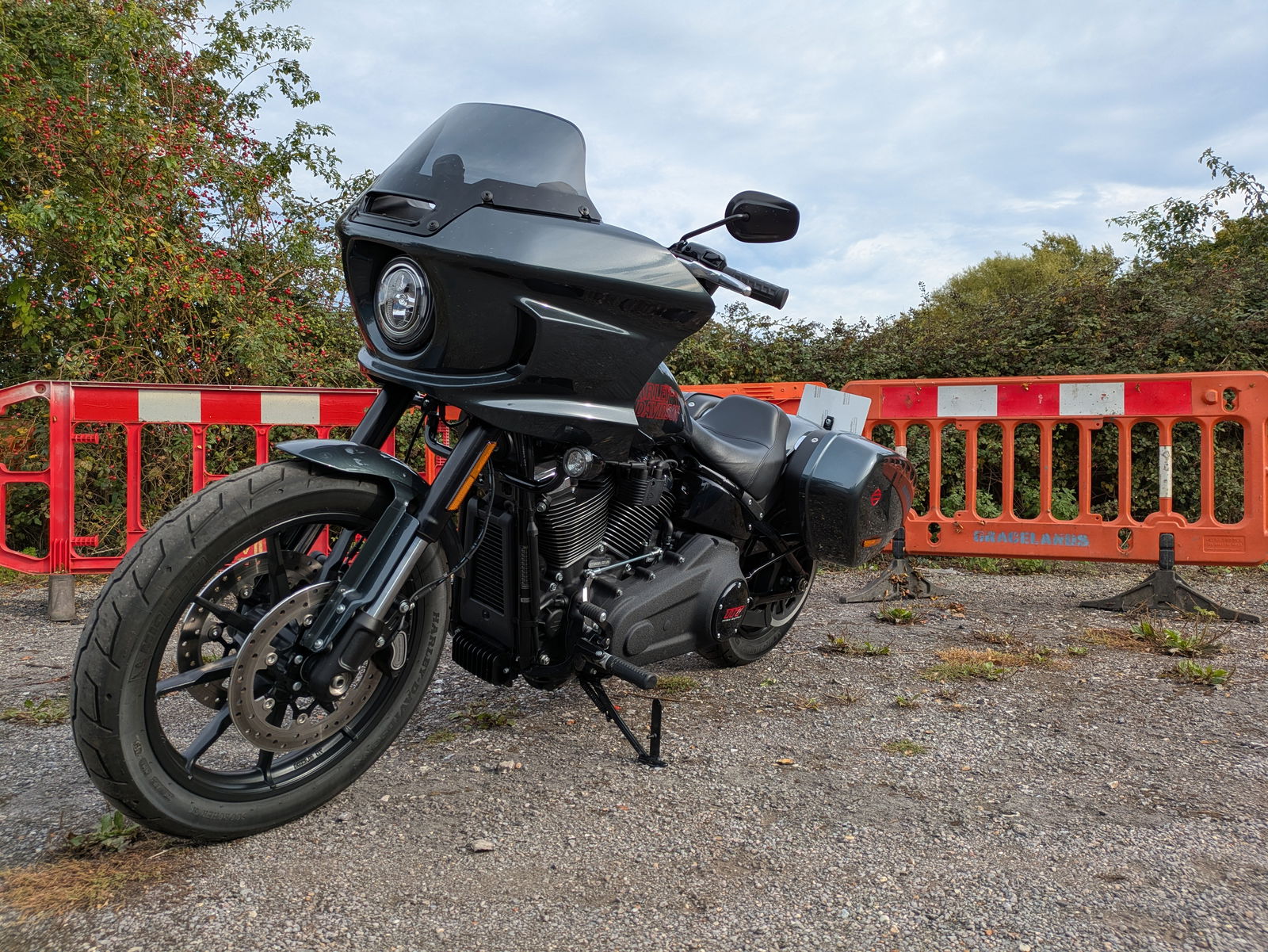
The bike’s price tag may be its only Achilles heel. But possibly I’m only saying that because I personally don’t have the £21,295 needed to meet its starting price. In truth, the Low Rider ST is probably worth what Harley wants for it.
Sure, you can find the same features in a more affordable package. But that bike won’t look, sound, and feel like this one.
That bike won’t be the sort of machine that you’ll be inclined to hold on to for life, the kind that you’ll brag about in the old folks’ home, the kind that your kids will hold up pictures of you riding and say: “Look how cool my dad was.”
The Low Rider ST will give you all that and more.
For more motorcycle news and reviews written by motorcyclists, stick with Visordown.
STARTING PRICE | £21,295 |
ENGINE | 1923cc air/oil-cooled Milwaukee Eight 117 High Output V-twin |
POWER | 112 bhp @ 5020 rpm |
TORQUE | 127.5 lb-ft @ 4000 rpm |
TRANSMISSION | Six-speed |
WEIGHT | 304 kg |
FUEL CAPACITY | 18.9 litres |
SEAT HEIGHT | 715 mm |
WHEELBASE | 1,615 mm |
TIRES (FRONT) | 110/90B19,62H,BW |
TIRES (REAR) | 180/70B16,77H,BW |
BRAKES (FRONT) | Dual disc, four-piston caliper |
BRAKES (REAR) | Single disc; two-piston caliper |
SUSPENSION (FRONT) | Single cartridge 43 mm inverted |
SUSPENSION (REAR) | Coil-over monoshock; 56 mm stroke; hydraulic preload adjustment |
